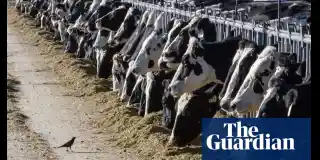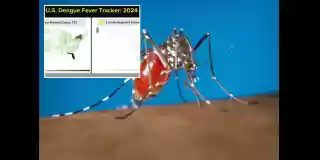Rising Concerns as COVID Cases Surge Again
If a lot of people suddenly seem sick with COVID to you, you're not alone. Once more, the disease is on many people's minds as infections, emergency room visits, hospitalizations and even deaths are all trending up, according to the latest data from U.S. Centers for Disease Control and Prevention (CDC). It's not that the COVID pandemic ever fully ended, but our baselines have shifted.
A high number of infections, injuries, and death have plagued us mercilessly since 2020, but in spite of some relative lulls, the risks of COVID haven't completely disappeared. Following another winter surge in 2023-2024, most COVID metrics fell during the spring. Now the trend is seemingly reversing, driven by new variants and waning immunity from both vaccines and infections. So far, it's too early to say whether the upward trend constitutes a new wave or not. But given that the last four summers have resulted in a steep rise in cases, it's reasonable to expect history to repeat itself this year, especially as temperatures drop in autumn.
And it won't surprise many people that our strategies for fighting COVID haven't changed much: masking in crowds, avoiding others when having symptoms, testing after exposure to those infected (especially if feeling symptomatic), and keeping up with vaccinations are all effective at reducing the spread of this persistent disease. But it's also true the pandemic has changed a lot since 2020. SARS-CoV-2, the virus that causes COVID, naturally mutates, just like all viruses. Every time it worms its way into a cell, it hijacks its DNA to make viral copies of itself and explodes out to repeat the cycle. Randomness in these genetic copies regularly occur -- sometimes they do nothing or even make the virus weaker.
Other times, these mutations give the virus an advantage, making it better at evading immunity, better at infecting, better at spreading, and leaving more destruction in its wake. 'A COVID summer wave appears to be underway,' Dr. Rajendram Rajnarayanan, of the New York Institute of Technology campus in Jonesboro, Arkansas, told Salon. 'Based on current data: Cases are rising in several states, with emergency department visits up 15% and hospitalizations up 25% compared to late May -- a pattern consistent with previous summer waves, which have historically occurred due to increased travel and indoor gatherings.' SARS-CoV-2 is not and never was benign. It attacks the vascular system, impacting basically every organ including the kidneys, lungs, heart, and brain.
Using its specialized spike protein like a master key, it can unlock and open the door to any cell with an ACE2 receptor, which turns out to be many cells in the body. This is why it's so effective at replicating inside us, but also why the virus is associated with lung scarring, digestive troubles, blood clots, chronic fatigue, and literal brain damage manifesting as headaches, dizziness, anxiety, Parkinson's-like symptoms, and other neurological disorders. 'Zombie' COVID fragments can linger in the body, causing these issues indefinitely. A study in May in the journal Nature Medicine examining the medical records of more than 135,000 people with SARS-CoV-2 infection reported that symptoms can persist for years. Often this plethora of symptoms is known as long COVID or (PASC post-acute sequelae of coronavirus disease.) The current swarm of SARS-CoV-2 variants mostly stemmed from a severely mutated strain nicknamed Pirola (BA.2.86) that was first detected late last summer.
Experts predicted it could cause serious issues, but its offspring like JN.1 became the dominant strains through most of 2024. More recently, JN.1 has been usurped by its own kids, specifically variants like KP.2, KP.3, and LB.1, according to the most recent CDC data. These three variants are collectively called the FLiRT variants because of shared traits in specific positions in the spike protein: F switches to L while R switches to T. These changes may seem small -- indeed, they are microscopic -- but they can give the virus added ability to evade immunity and increase their transmissibility, making them spread better from person to person. Keeping with the keys metaphor, immunity is a bit like changing the locks when a SARS-CoV-2 virus attacks us.
But they are clever locksmiths that keep making new and improved sets of keys. 'The variant LB.1 has the potential to infect some people more easily based on a single deletion in a spike protein,' Dave Daigle, the associate director at the CDC's Communications Center for Global Health, told Salon. 'This is present in multiple JN.1 lineages.' 'However, there is currently no evidence that LB.1 causes more severe disease,' Daigle noted. 'Most key COVID-19 indicators are showing low levels of activity nationally, therefore the total number of infections this lineage may be causing is likely low. COVID-19-associated hospitalizations and deaths remain low.
CDC will continue to track SARS-CoV-2 variants and is working to better understand the potential impact on public health.' Rajnarayanan said the KP.3 lineage is of 'particular concern,' because it appears to be more immune evasive than other circulating lineages. 'KP.3.1 seems to have appreciable growth advantage over other circulating lineages,' he said. So now we know why cases are seeming to surge yet again. But the big question is whether this will translate to different symptoms or an increase in severe disease outcomes, namely hospitalization and death. 'I don't think the virus is any less (or likely any more) inherently dangerous now, and it is of course a myth that viruses always evolve to become more benign,' Dr.
T. Ryan Gregory, an evolutionary and genome biologist at the University of Guelph in Canada, told Salon. 'The main reason we are experiencing far less in the way of severe acute infections is that there is a degree of immunity in the population from past infection and (decreasingly) from vaccination.' However, Gregory noted this immunity wanes over time, and the virus continues to evolve immune escape. 'Vaccine uptake is abysmally low these days, which means that any immunity that ends up being maintained will mostly come from reinfection,' he said. 'That means more variant evolution, more chances of getting long COVID, and so on.
It is always important to emphasize that severe acute respiratory (the S, A and R in SARS) are not the only issue. There is also long COVID and increased risk of all sorts of cardiovascular, metabolic, neurological, and other conditions.' Another outstanding question is whether current or future vaccines can keep up with these new strains of SARS-CoV-2. 'The currently available vaccines target XBB.1.5 (Kraken), which has not been circulating for quite some time,' Gregory said. 'Those older vaccines work, though not nearly as well, versus JN.1 (and probably less so against KP.2, KP.3, and LB.1).' The U.S. Food and Drug Administration is likely to approve updated vaccines this fall, advising drugmakers to target the KP.2 strains, according to NBC News.
The FDA apparently reversed course after initially recommending vaccine developers target JN.1 instead. 'It looks like the updated Novavax will target JN.1 whereas the mRN

https://www.washingtonpost.com/health/2024/07/03/covid-rising-kp2-flirt-lb1/
 NewsBOT
NewsBOT












